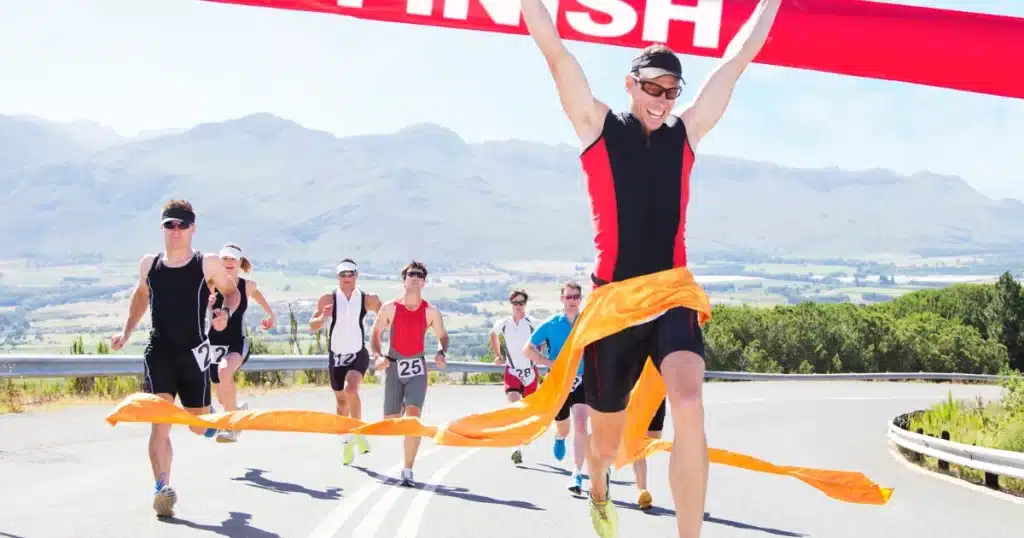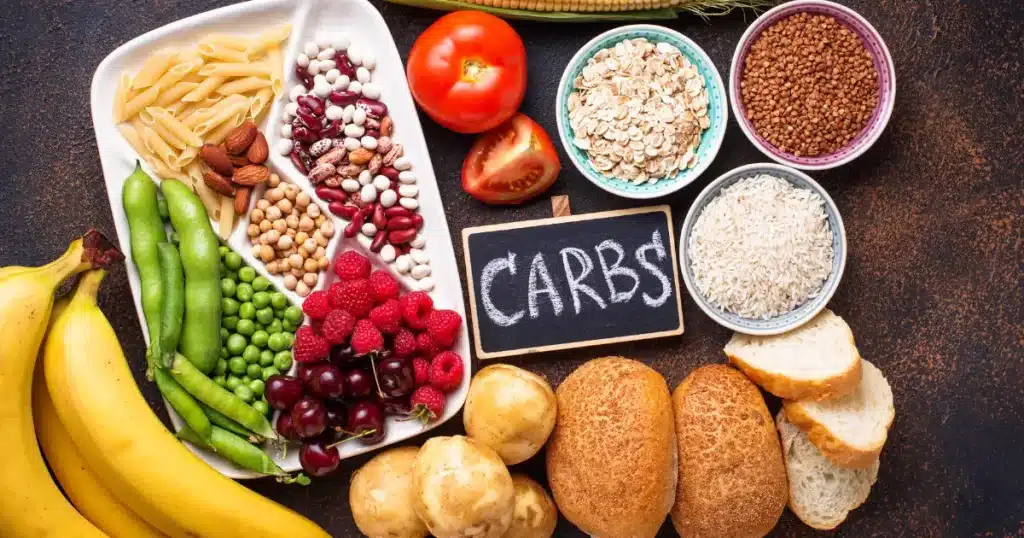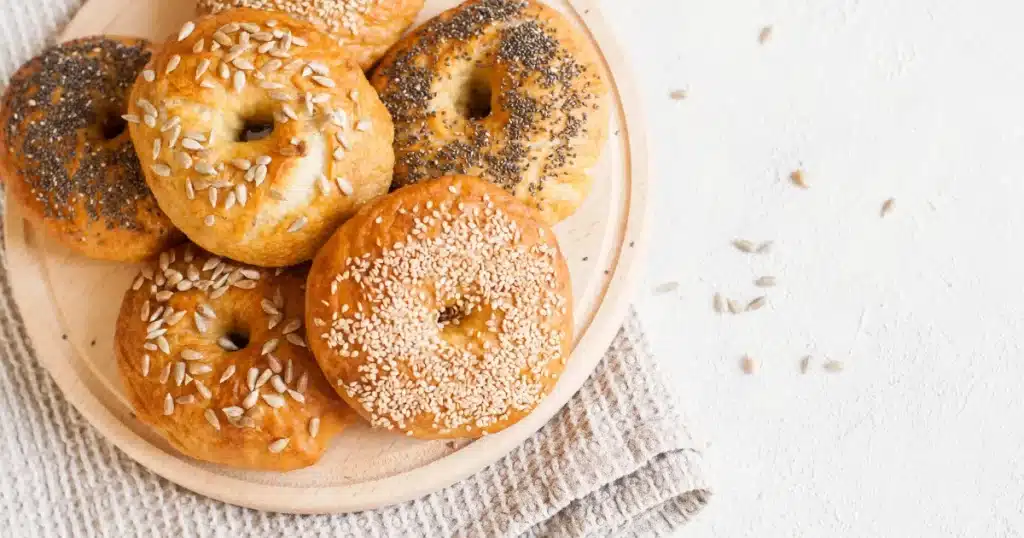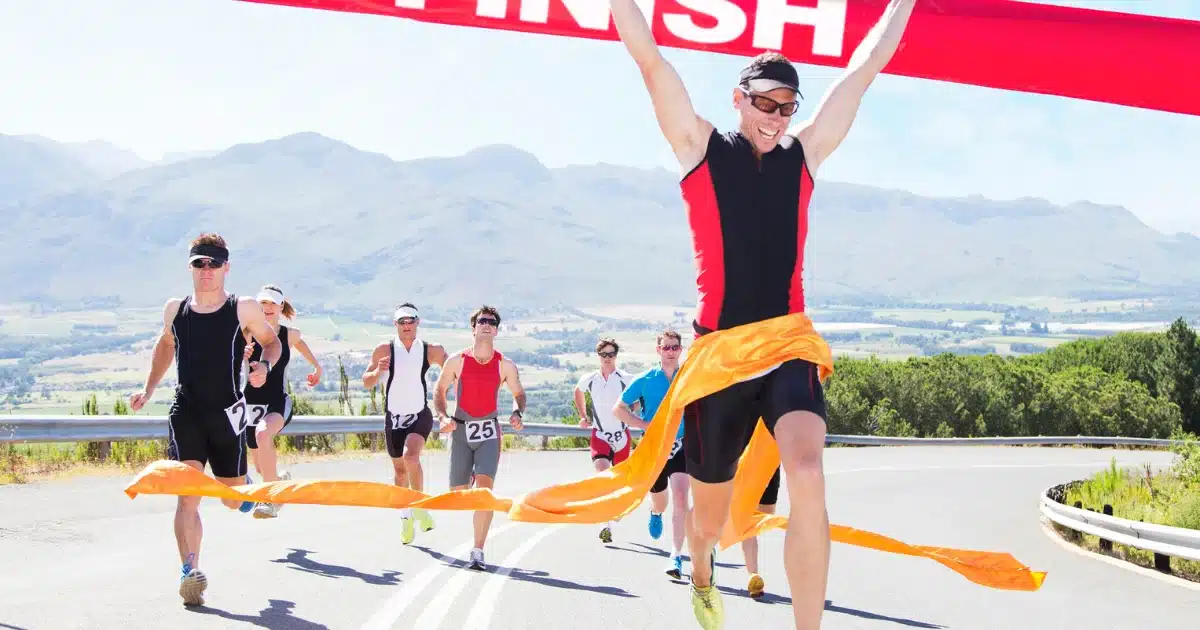RUNNING →
Level Up Your Nutrition Game With Our Freebies
Alex
I provide nutrition coaching for endurance athletes to improve performance and body composition through a simple and flexible eating style.
Hi, I'm
ATHLETE EATING GUIDE →
PROTEIN →
TRIATHLON →
RECIPES →
PERFORMANCE NUTRITION →
SUPPLEMENTS →
HOLIDAY & TRAVEL →
PLANT-BASED →
FEMALE ATHLETE NUTRITION
Explore the Blog
LEARN MORE →
ATHLETE GROCERY SHOPPING GUIDE →
RACE DAY: TRIATHLON NUTRITION PLANNER →
READY TO FUEL?
incredible value!
The fueling guide bundle serves as your one-stop-shop for strategies to fueling before, during and after your workouts.
ENDURANCE EATS
BINGE-WATCH READY!
YOUTUBE SERIES

When it comes to Ironman race day nutrition, the amount of information to learn can be overwhelming. Not only in terms of the logistics, but specifically, all the nutritional nuances you might expect there to be. While there is much to say about fueling for endurance events, there are three key aspects of Ironman race day nutrition that we believe to be the most important. Let’s dive in.
Ironman Race Day Nutrition: Carbs give you superpowers.
Carbohydrates get a bad rap these days. The media loves to highlight the benefits of protein and healthy fats, and oftentimes, sheds a negative light on carbs. This mostly stems from the fact that so much of what a typical American eats is heavily in favor of the more processed carbs.
But, you are not a typical person. You’re training and racing in an Ironman. You’re exceptional, and carbs are your new best friend.
Carbs give our body a quick and efficient source of energy.
Here are a few other ways in which carbs truly do give us superpowers.
- Glucose, the main source of sugar in our blood, is the main source of energy for our brains
- Carbs are essential for the production of serotonin, which is a neurotransmitter that can regulate mood
- Fiber, a source of carbohydrate, plays an important role in our digestive health
- Carbs help to regulate blood sugar
- Improper intake of carbs can affect cortisol levels (our main stress hormone)
This list only scratches the surface. But, you can get an idea why carbs are needed not only for the athlete but for the everyday person as well.
And yet, many athletes believe that reducing carbohydrate intake will improve their performance. It is thought that limiting carbs will force the body to learn how to use fat as fuel. However, there are so many factors that affect the fuel source we use during exercise. Intensity, length of workout, how long you have been an athlete, genetics, and even the food we eat on an everyday basis, all affect the type of fuel we use.

Lack of carbs can impact muscle and strength
If we don’t consume enough carbs, our bodies can actually breakdown stored protein in the muscle to use as energy. This doesn’t just happen occasionally if an athlete doesn’t properly fuel for the session. This can also happen to the person who is working out every day but not meeting the carbohydrate needs they need to support all that activity. Over time, this is where we see athletes losing strength and their lean body composition. Don’t lose that muscle you’ve worked so hard to build.
When you’re training on a consistent basis, your caloric needs increase dramatically, specifically from carbs. So beyond eating carbohydrates to feed your body, you need more to fuel your workouts and even more on top of that to restore your glycogen for the next workout. If you want to see improvements in your training, while also recovering from all the hard efforts you are doing, you have to give your body the fuel it needs.
What do you do if you’ve been stuck in the mindset that lower carb is better?
That carbs are the enemy, and ultimately, lead to fat gain? How do we shift our mindsets to eating more carbs for improved energy and therefore better performance? This change in thinking won’t happen overnight. But starting small and assessing the impact it has on your personal performance is a good place to start.
For example, let’s say you have an easy 40 min, zone 1 recovery run in the morning. Instead of forgoing that morning snack, try adding in something as simple as a small banana or 6 ounces of juice. This is the equivalent of about 25g of quick digesting carbs. Pay attention to your energy during the run and after. By preventing that dip in glycogen all together, you might find that you were able to push harder in the session and hunger is more regulated after you have completed the workout.
The bottom line is that carbs are awesome. Foods like bagels should be wearing superhero capes with the effective energy that they provide you as an Ironman triathlete.

Ironman Race Day Nutrition: Fuel early and often
One of the biggest mistakes I often see athletes make is that they rely on their internal cues of hunger and thirst to guide them when to fuel. When it comes to Ironman race day nutrition, you want to practice “fuel before you’re hungry, and drink before you’re thirsty.” Because once you get behind on nutrition and hydration, it’s very difficult to catch back up.
In fact, several research studies have compared intuitive vs. intentional fueling. Meaning, they looked at eating and drinking choices based on individual hunger and thirst cues versus eating and drinking choices based on strict fueling recommendations. And, overall, we see significant differences in performance outcomes for those that base their eating and drinking strategy off science.
When we work with athletes, we take an in-depth look at what is currently being used during exercise. And in most cases, we see a lot of athletes who are under fueling and under hydrating. And not only that, we often hear stories of athletes not eating during workouts or races at all, let alone at the right times. It’s amazing to see the improvements in performance, mood, energy levels and strength once we make adjustments on timing and amounts of fuel intake for these individuals.
Putting this into practice
To put this into practice for yourself, make a game plan for your fueling and hydration strategy in your next workout. The longer your planned workout, the more carbs you’ll ideally want to take in prior to workout. You will also want to increase the amount of carbs, hydration and sodium you take in each hour as well.
On top of that, most sports watches do have an alert feature for you to set up reminders throughout your workout to take in nutrition and hydration. This is a great practice to get into during training and race day to stay on track with fueling during workouts.
Lastly, think outside the box when fueling for your workouts. Sports gels and drinks can get pretty expensive. Especially when you are having to rely on them daily or at least a few times per week. Consider using:
- Medjool dates (35g per 2)
- Applesauce squeeze packets (20-25g per 1)
- Sugary, low fiber cereal (25-30g for 1 cup)
Ironman race day nutrition requires so much energy. Don’t let yourself get behind!
Lastly, Small, consistent habits pay huge dividends

Think back to the last race you crushed. It doesn’t have to be a race in which you went your fastest. But think back to a time when the pace was fast, and maybe the conditions were tough, but you felt so good you could push through. Now, try and rewind the clock in the hours and days leading up to that time.
- What foods did you eat?
- How often did you snack?
- How much water / electrolytes did you drink?
- What was your sleep routine like?
Try and write down any little nutrition-related habit that helped foster the perfect environment for you. And then aim to replicate those habits as often as you can. In creating a personal race day routine, you essentially are channeling nervous energy into a focus that you can control, and making it harder for bad habits to take over.
A few of the things we like to focus on in the days leading up to a race like an Ironman:
- Increasing carbs significantly. We do this to load your muscles with glycogen so you will feel energized and well fueled for an all day event. (And make sure you’re carb-loading!)
- Keeping foods simple and easy to digest to avoid digestive distress on race day.
- Increasing intake of electrolytes to support optimal hydration status.
- Planning out your personal fueling strategy all the way from your pre-race breakfast through to your post-race celebration meal.
While there are bound to be kinks in the road, laying a foundation like this can help provide a race day security blanket to ease anxiety.
Consider working with dietitians who’ve done an Ironman

The Alex Larson Nutrition dietitian team has two dietitians who’ve done an Ironman, both Alex and Hanna. Having that first-hand experience is what makes our nutrition coaching exceptional, because we get it. We’ve been there. We understand what goes into prepping your Ironman race day nutrition.
There is no one-size-fits all approach to race day nutrition recommendations, which is why I have my 1:1 nutrition coaching program. For most individuals, it requires a lot of trial and error, and my dietitian team and I are well-versed in streamlining this process to get you dialed in and feeling really confident about your Ironman nutrition.
If you are feeling lost and overwhelmed by where you are at in your athletic journey, reach out! We would love to be that sounding board and support system for you as you navigate the journey to your biggest athletic goals!
Alex
I provide nutrition coaching for endurance athletes to improve performance and body composition through a simple and flexible eating style.
Hi, I'm
LEARN MORE →
take the quiz!
Let's discover your Endurance Nutrition IQ
How well do you know your fueling? Answer these questions and let's see where your endurance nutrition knowledge is at!
Take the quiz
level up your nutrition game with these freebies
free downloadS
Protein-Packed 10-Day Sample Meal Plan
Athlete Eating Guide
Athlete Grocery Shopping Guide
1
2
3
Inspiration to fit 120 grams of protein into your day
Planning what goes on your plate
Putting the right foods in your grocery cart
